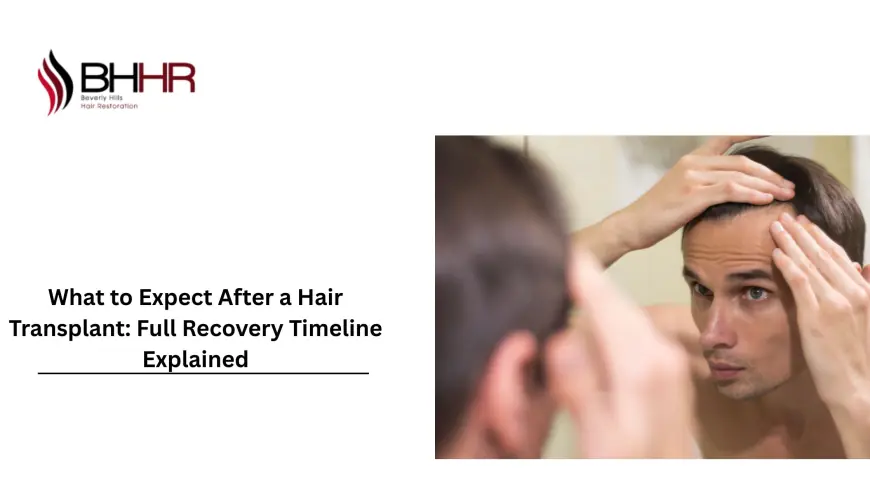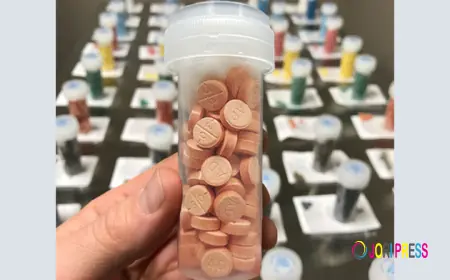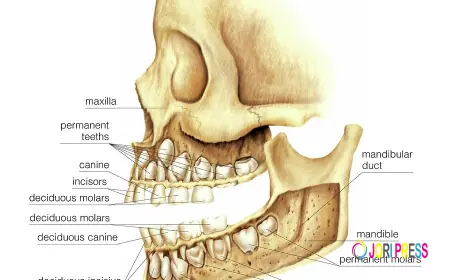What to Expect After a Hair Transplant: Full Recovery Timeline Explained
A hair transplant is an exciting step toward restoring not just your hair, but your confidence. However, it's essential to understand

A hair transplant is an exciting step toward restoring not just your hair, but your confidence. However, it's essential to understand that the journey doesn’t end when you leave the clinic. Recovery is a crucial part of the process, and results appear gradually. By knowing what to expect at each stage, you can better prepare, follow aftercare instructions, and avoid unnecessary stress.
In this guide, we’ll walk you through the complete hair transplant recovery timeline, highlighting the key stages of healing and hair growth from day one to the final results.
Day 1–3: Immediate Recovery Phase
The first few days after your hair transplant are all about rest and recovery. It’s normal to experience:
-
Redness and mild swelling around the recipient and donor areas
-
A tight or sore feeling in the scalp
-
Tiny scabs were forming where the grafts were implanted
You’ll be given detailed aftercare instructions, including how to sleep with your head elevated, how to rinse your scalp gently, and what medications to take if prescribed. This is a delicate phase, and touching, rubbing, or scratching your scalp should be avoided entirely.
The goal in this period is to keep the scalp clean and protected while minimising inflammation or trauma to the grafts.
Week 1: Scabbing and Early Healing
By the end of the first week, the healing process will be well underway. Small scabs may still be visible, but they will begin to flake off naturally. Some key things to remember during this stage:
-
Avoid harsh shampoos or pressure while washing your hair
-
Do not pick or scratch at the scabs
-
Continue to protect the area from direct sunlight
The grafts are becoming more secure in the scalp, and any redness should begin to fade. It’s common for patients to feel a little impatient during this time, but it’s important to allow your body to heal properly.
Week 2–3: Shedding Phase (Shock Loss)
One of the most misunderstood stages in the hair transplant recovery timeline is the shedding phase, also known as “shock loss.” Around 2 to 3 weeks post-op, you may notice the newly transplanted hairs falling out.
This is completely normal and part of the natural healing cycle.
-
The follicles remain in place, but the visible hair shafts shed
-
This allows the follicles to reset and prepare for new growth
-
Some minor itching or flaking may continue, but usually subsides by week 3
Although it can be alarming to see hair fall out after surgery, this is a positive sign that your body is progressing through the normal healing timeline.
Months 1–3: Resting Phase
After the shedding phase, most people experience a relatively quiet period. This is known as the dormant or resting phase, where:
-
Hair follicles are healing under the surface
-
No significant growth is visible yet
-
The scalp looks and feels more normal
While you might not see external progress, important cellular repair is happening beneath the surface. This is where patience becomes essential.
Following any recommendations from your surgeon—like using gentle shampoo, avoiding chemical treatments, and eating a nutrient-rich diet—can help support a healthy regrowth environment.
Months 4–6: New Growth Begins
This stage brings the excitement back, as early hair growth starts to appear. You may notice:
-
Fine, soft hairs beginning to sprout
-
Gradual thickening of the hairline and crown areas
-
Improvement in overall scalp appearance
The new hair may look lighter, thinner, or curlier than your original hair—this is temporary. Over time, it will darken and strengthen. While progress varies from person to person, many start seeing visible results during this period of the hair transplant recovery timeline.
Months 6–9: Noticeable Changes
By this stage, many patients experience a significant boost in both hair volume and confidence. You can expect:
-
Thicker, healthier-looking hair
-
Increased coverage in treated areas
-
Improved texture and hair density
This is when the results start to resemble the outcome you envisioned before surgery. While some people may feel they’ve already achieved 80–90% of their final look by month 9, the best is yet to come.
Months 9–12: Final Results
In most cases, the full results of a hair transplant are visible by the 12-month mark. Here’s what you’ll likely see:
-
Fully matured hair strands with improved thickness
-
Permanent, natural-looking hairlines
-
A consistent growth pattern that blends with your native hair
By this time, styling your hair becomes easier, and it’s safe to return to regular grooming habits (including haircuts and light dyeing if approved by your doctor). This marks the completion of your hair transplant recovery timeline.
Expert Recovery Support from Beverly Hills
At Beverly Hills, we understand that the success of a hair transplant depends not only on surgical skill but also on comprehensive recovery support. Our team provides detailed post-procedure guidance tailored to your specific needs. From the moment your transplant is complete, we’re committed to helping you navigate each stage of recovery safely and confidently.
Our clinic emphasises patient education, follow-up consultations, and personalised care to ensure optimal results. If you're considering a hair transplant or have questions about your recovery progress, our experts are here to help.
Conclusion
A hair transplant is not just a single procedure—it’s a journey that unfolds over time. Understanding the full hair transplant recovery timeline allows you to stay informed, reduce stress, and make the right choices during each stage of healing.
While every patient’s experience is slightly different, the overall pattern—from scabbing and shedding to regrowth and final results—remains consistent. Trust the process, follow your surgeon’s advice, and give your body the time it needs to heal.
Your fuller, healthier head of hair is well worth the wait.
What's Your Reaction?
 Like
0
Like
0
 Dislike
0
Dislike
0
 Love
0
Love
0
 Funny
0
Funny
0
 Angry
0
Angry
0
 Sad
0
Sad
0
 Wow
0
Wow
0


















































